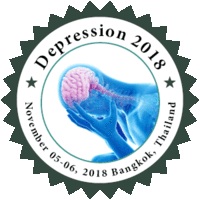
Jonghun Lee
Catholic University of Daegu School of Medicine, Daegu, Republic of Korea
Title: Factors associated with smoking frequency and suicidal attempt in Korean adolescent smokers
Biography
Biography: Jonghun Lee
Abstract
Objectives: Smoking is known to increase the number of physical and mental illnesses and suicide attempts, and is often initiated during adolescence. Among adolescents, unlike in adults, the proportion of daily smoking tends to increase with age, and does not return to the previous level. Therefore, we examined the factors associated with smoking frequency in a nationwide sample of Korean adolescents to help prevent the progression of smoking.
Methods: Among 127,804 adolescents who participated in the 2016 and 2017 Korean Youth Risk Behavior Web-Based Survey, data from 7781 adolescents who replied that they currently smoked were analyzed. According to the frequency of cigarette smoking, participants were classified into daily and non-daily smokers. Participants’ socio-demographic characteristics, smoking behavior, and psychological problems including perceived stress, depressive mood, and suicidality were assessed.
Results: Mean age of current smokers was 16.15 ± 0.04 years. There were 3627(47.4%) daily smokers and 4154(52.6%) non-daily smokers. Low parental educational level, and early smoking experience were positively associated with daily smoking. High academic achievement, and high socio-economic status were negatively associated with daily smoking. Daily smoking was positively associated with lower happiness, lower sleep satisfaction and severe stress during the past 12 months. Factors affecting suicide attempts of smokers were sex, residential type, socioeconomic status, and early smoking experience.
Conclusions: The results indicated that being male, older age, socially disadvantaged families, and early smoking experience influenced daily smoking among Korean adolescents. Daily smoking was associated with psychological problems including lower happiness, lower sleep satisfaction, and severe stress. Early intervention for smoking cessation in this high-risk group may contribute to prevention of harmful effects of smoking.

